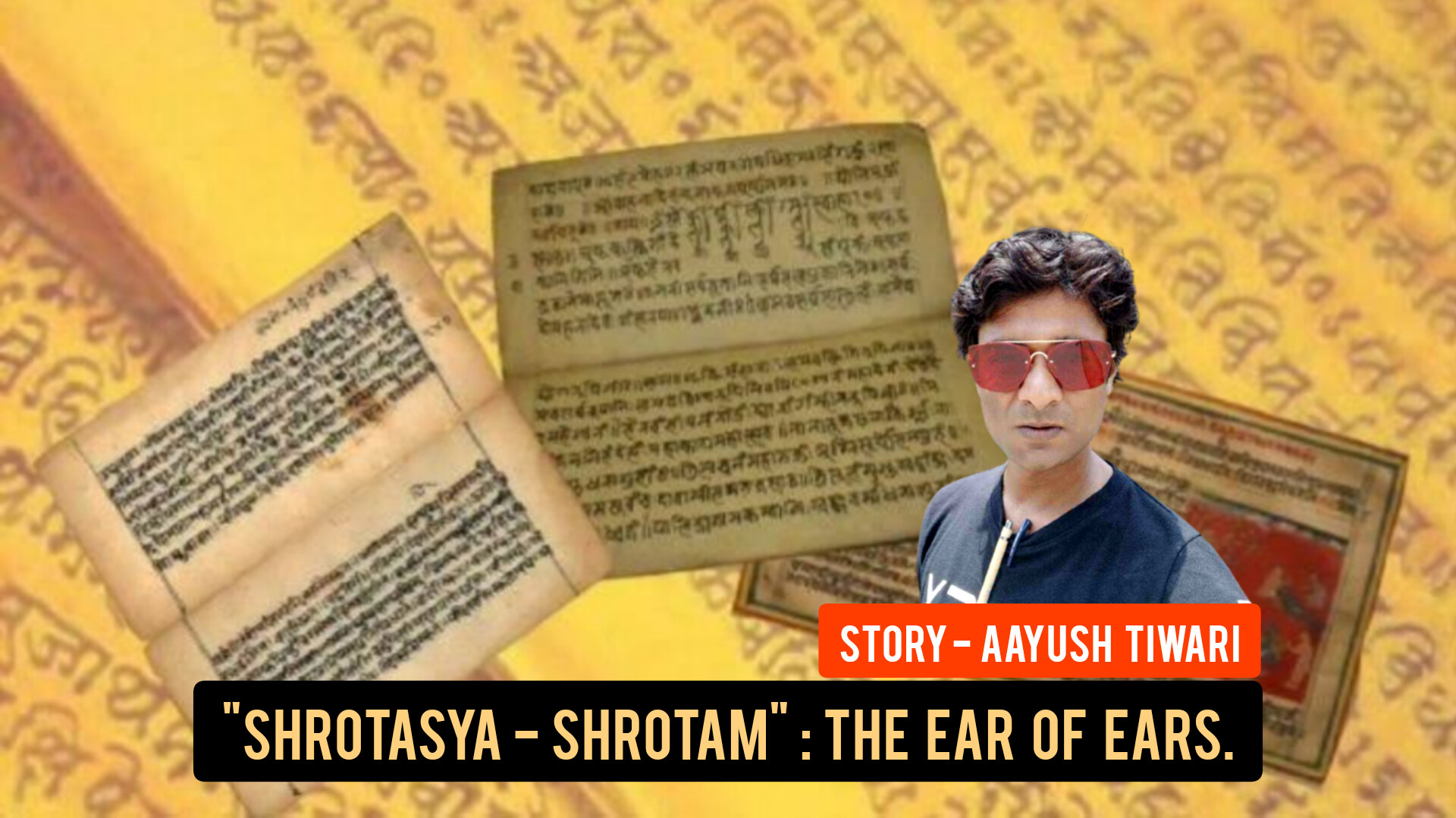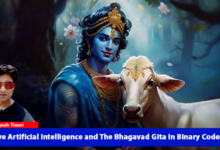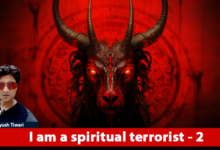
|
Getting your Trinity Audio player ready...
|
( Kena Upnishad 1.2)
In the vast universe of Hindu mythology and ancient scriptures, several intriguing concepts pique our curiosity that are pragmatic today more than ever. One such concept is that of “Shrotasya Shrotam,” which translates to “Ear of Ears.” This term holds profound significance and symbolism in understanding the deep connection between the individual and the Divine. In this blog post, we will explore the meaning behind Shrotasya Shrota and its implications for spiritual seekers.
“Kakar pathar jod ke masjid liye banaye,
Tachad mulla baag de,
Kya behra hua khudae”
Kabir
Understanding of Shrotasya Shrotam, is rooted in this wag of Saint Kabir, who questions the futility of shouting verbally the non verbal (in the sky) as if the god is deaf. No, rather the source of divine is so near that even before we paraphrase in sentences , it listens. In Hindu philosophy, the human body is believed to be a microcosm of the cosmos, reflecting the intimate connection between the macrocosm and the microcosm.
“Yatha pinde tatha brahmande,
Yatha brahmande tatha pinde “
The concept of Shrotasya Shrotam emphasizes the notion that just as the ear is the sensory organ for hearing, there exists an inner ear that transcends physical hearing and allows individuals to perceive deeper levels of reality.
To grasp the true essence, it is crucial to realize that it goes beyond mere auditory perception. It points towards an expanded state of consciousness that enables one to listen to the unspoken, to hear the silent messages of the universe, and to connect with the divine wisdom that resides within and beyond. Shrotasya Shrota represents the ability to listen to spiritual insights, divine guidance, and higher vibrations. It suggests that by attuning our inner ear, we can receive messages from the divine, helping us traverse the spiritual path.
This expanded awareness opens up new dimensions of understanding and fosters conscious living. It highlights the importance of developing a sensitivity to subtle energies and frequencies. By cultivating mindfulness, meditation, and deep introspection, one can attune their inner ear to the whispers of their intuition, allowing them to make wiser decisions and navigate through life’s challenges.
“Ayam Nijah paroveti gadhna ch laghu chetsam,
Udar charitanantu Vasudhev Kutumbhkam”
Shrotasya Shrota serves as a reminder that all beings are interconnected, and every voice, physical or metaphysical, has something meaningful to contribute. This is the present day scientific developement as well that calls this cosmic consciousness a singularity – ‘space/time/consciousness’.
It is apparent in the Bhagwat Gita when lord Krishna depicts the quality of an incredible listener not uttering a word till the second chapter. He listens patiently the plight of devastated Arjun, word by word, patiently till finally the warrior collapses concluding
“Na yuddham keshavam
Na yuddham keshavam”
Then Krishna finally takes the mike in his hands and next 16 chapters flow like Ganges from Gangotri.
So Cultivating Shrotasya Shrota is Inner Stillness. Engaging in daily practices like meditation, mindfulness, or contemplation helps create a calm and receptive state within, allowing the inner ear to awaken and listen to the subtle messages of the universe. Regular self-reflection deepens self-awareness and allows us to discern our true desires, values, and purposes. This inner clarity enables us to recognize the profound wisdom that arises from within.
To embrace a lifelong journey of learning and exploring spiritual texts, wisdom teachings, and philosophies. Such a quest enhances knowledge, expands consciousness, and facilitates the connection between the individual and the cosmic ear.
Shrotasya Shrotam, the Ear of Ears, represents the mystical aspect of hearing that transcends the boundaries of the physical world. It signifies an elevated state of consciousness and the ability to perceive divine messages and deeper spiritual insights. By nurturing this inner ear, developing stillness, and cultivating self-awareness, individuals can embark upon a transformative journey of self-discovery and communion with the divine. May we all strive to awaken our Shrotasya Shrotam and embrace the harmonious symphony of existence.





